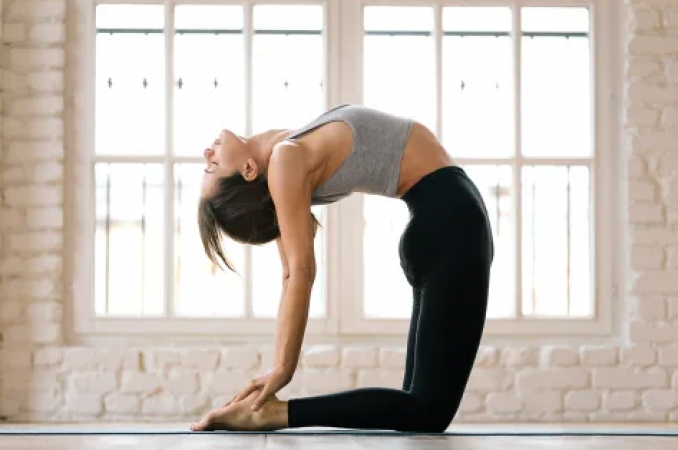
Yoga, an ancient practice originating in India, encompasses a wide range of postures and techniques aimed at fostering physical, mental, and spiritual well-being. Among the various yoga postures, backbends hold a significant place due to their numerous health benefits. Backbends not only strengthen and increase flexibility in the spine but also have profound effects on the entire body and mind. In this article, we delve into the remarkable health benefits of incorporating backbends into your yoga practice.
Spinal Flexibility and Strength - One of the primary benefits of backbends is the promotion of spinal flexibility and strength. As we age, our spine tends to lose its natural mobility. Backbends help counteract this process by stretching the front side of the body and opening the chest, thereby creating space in the spine. This increased flexibility allows for better posture and reduces the risk of spinal issues, such as stiffness and pain.
Stimulates the Nervous System - Backbends have a stimulating effect on the nervous system, particularly the sympathetic nervous system. As you arch your back, the chest opens up, allowing more oxygen to enter the lungs. This deep breathing activates the parasympathetic nervous system, inducing a state of relaxation and reducing stress and anxiety. Regular practice of backbends can also enhance the functioning of the endocrine system, which is responsible for hormone regulation and overall well-being.
Improves Digestion - Backbends provide a gentle massage to the organs in the abdomen, improving digestion and alleviating digestive issues. The compression and expansion of the abdomen during backbends aid in the efficient elimination of toxins and waste from the body. As a result, practitioners often experience improved digestion, reduced bloating, and a more regular bowel movement.
Heart Health and Blood Circulation - Backbends stimulate the cardiovascular system, promoting better blood circulation throughout the body. The heart is gently stretched and massaged during backbends, enhancing its overall health and function. Increased blood flow also helps deliver oxygen and nutrients to various organs and muscles, aiding in their optimal performance.
Energizing and Uplifting - Practicing backbends can have an invigorating and uplifting effect on the mind and body. The act of bending backward against gravity creates an adrenaline rush, leaving practitioners feeling refreshed and energized. Additionally, backbends help release endorphins, which are natural mood boosters, leading to an enhanced sense of well-being and happiness.
Boosts Confidence and Self-Esteem - Backbends are often associated with heart-opening postures, symbolically representing the expansion of the heart and the vulnerability that comes with it. As individuals open up emotionally during backbends, they may experience a sense of liberation and empowerment. This newfound openness can lead to increased self-confidence and a more positive self-image.
Counteracts the Effects of Prolonged Sitting - In our modern sedentary lifestyle, many people spend hours sitting at desks or in front of screens, which can lead to poor posture and back pain. Backbends provide an excellent counterbalance to this lifestyle by reversing the effects of prolonged sitting. They stretch and strengthen the muscles of the back, shoulders, and chest, helping to alleviate tension and discomfort caused by sitting for extended periods.
Incorporating Backbends into Your Yoga Practice:
Before attempting backbends, it's crucial to warm up adequately and be mindful of your body's limitations. If you are new to yoga or have any existing health conditions, it is advisable to seek guidance from a qualified yoga instructor to ensure proper alignment and prevent injuries.
Begin with gentle backbends such as Bhujangasana (Cobra Pose) or Salabhasana (Locust Pose) and gradually progress to more advanced postures like Urdhva Dhanurasana (Wheel Pose) and Dhanurasana (Bow Pose). Remember to engage the core muscles and distribute the backbend evenly throughout the spine to maintain a safe and stable posture.
In conclusion, backbends in yoga offer a plethora of health benefits, ranging from spinal flexibility and strength to improved heart health and emotional well-being. Integrating these heart-opening postures into your yoga practice can have a transformative effect on both your physical and mental health, leaving you feeling more vibrant, confident, and connected to yourself and the world around you. So, roll out your yoga mat, take a deep breath, and embrace the journey of back bending to unlock its incredible potential for holistic wellness.
Also read: Harnessing the Power of Maca Root Powder: A Nutritional Powerhouse with Health Benefits
8 Habits That Weaken Your Immune System and How to Break Them